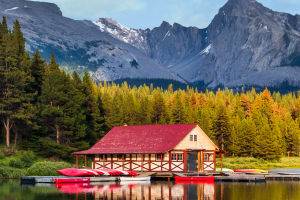Desert travel can be an exciting and adventurous experience.
It's a unique opportunity to explore vast, arid landscapes and immerse oneself in the natural beauty of the desert.
However, traveling in the desert can also be challenging and even dangerous if not properly prepared.
Here is a detailed introduction to desert travel:
1. Planning and Preparation
Before embarking on a desert trip, it's essential to plan and prepare thoroughly.
This includes researching the area you'll be traveling to, understanding the local climate, and knowing what to expect in terms of terrain and wildlife. You should also consider the length of your trip, the type of vehicle you'll be using, and the supplies you'll need.
2. Navigation
Navigation is critical when traveling in the desert, as landmarks can be hard to come by, and distances can be deceiving.
Make sure to have a map and compass and know how to use them. It's also a good idea to have a GPS device or smartphone app with offline maps.
3. Water
One of the most critical aspects of desert travel is water.
The human body can quickly become dehydrated in a hot and arid environment, so it's essential to carry enough water and know how to find additional sources if needed. The general rule of thumb is to carry at least one gallon of water per person per day.
4. Food
When planning your meals, choose foods that are lightweight, non-perishable, and high in calories. Snacks like nuts and dried fruit are excellent choices for a desert trip.
5. Clothing and Gear
The desert can be scorching during the day and freezing at night, so it's important to pack appropriate clothing and gear.
Lightweight, breathable fabrics like cotton and linen are good choices for daytime wear, and warm layers and sleeping bags are essential for colder nights. Sunscreen, hats, and sunglasses are also crucial for protection from the sun.
6. First Aid
It's important to carry a well-stocked first aid kit that includes items like bandages, antiseptic, and pain relievers.
It's also a good idea to know basic first aid techniques, like how to treat heat exhaustion or dehydration.
7. Safety
Always let someone know where you'll be traveling and when you plan to return. It's also important to have a plan in case of an emergency, like a breakdown or injury.
Make sure to carry a fully charged cell phone and consider investing in a satellite phone or emergency beacon for remote areas.
In conclusion, desert travel can be a challenging but rewarding experience.
Proper planning, preparation, and safety measures are essential for a successful journey.
By following these guidelines, you can enjoy the beauty and adventure of the desert while staying safe and prepared.


